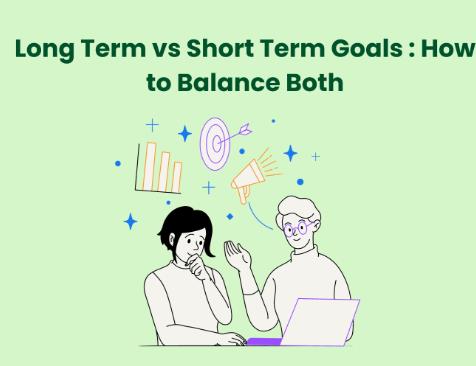Exploring the Difference: Short-Term vs Long-Term Goals?
Understanding the distinctions between short-term and long-term goals is crucial for effective strategic planning, whether in personal development or business growth. Each type of goal serves unique functions and requires different approaches to achieve. Let's delve into what differentiates these goals and how to leverage each for maximum success.

Defining Short-Term Goals
Short-term goals are typically set with a completion timeline of up to a year. They are specific, measurable, and designed to achieve quick wins that provide immediate benefits or progress toward a larger objective.
Characteristics of Short-Term Goals:
- Quick Achievement: These goals are often completed in days to months, offering immediate satisfaction and results.
- Tactical: They focus on immediate tasks and are highly practical, such as improving quarterly sales by 15%.
- Motivational Boost: Achieving short-term goals regularly boosts morale and motivation by providing tangible progress and success.
A survey by the American Psychological Association shows that setting short-term goals can increase individual productivity by as much as 40% because they provide clear, immediate targets to work towards.
Understanding Long-Term Goals
Long-term goals require a broader scope and a longer time horizon for achievement, usually extending several years into the future. These goals are more complex and involve a deeper level of commitment and planning.
Characteristics of Long-Term Goals:
- Visionary and Strategic: Long-term goals are set with a future vision in mind, such as expanding business operations globally or achieving financial independence.
- Require Patience and Persistence: They demand long-term commitment and sustained effort, often facing more obstacles and requiring more resilience.
- Foundation for Growth: These goals are crucial for long-term success and often involve significant life or business milestones.
According to a study published in the Journal of Applied Psychology, long-term goal setting is linked to enhanced motivation through personal aspirations and career advancements, affecting overall life satisfaction and professional success.
Strategic Integration of Both Goals
To maximize effectiveness, both short-term and long-term goals should be strategically aligned. This approach ensures that the achievements of short-term goals contribute directly toward the realization of long-term aspirations.
Effective Planning Strategies:
- Set Milestones: Use short-term goals as milestones for long-term goals. This method helps maintain momentum and clarifies the path to long-term achievements.
- Regular Evaluation: Continuously assess both short-term and long-term goals to ensure alignment and adjust strategies as needed based on progress and changing circumstances.
- Balance Flexibility and Consistency: While short-term goals may require more frequent adjustments, long-term goals should remain consistent, adjusting only for significant shifts in personal or business strategy.
Impact and Measurement
The impact of short-term goals is typically immediate and easy to measure, such as weekly sales numbers or monthly traffic reports. In contrast, long-term goals are evaluated against broader criteria over longer periods, such as market share growth over five years or career progression over a decade.
Conclusion: Navigating Goals for Optimal Success
In conclusion, the key to successful planning lies in understanding and implementing both short-term and long-term goals effectively. By distinguishing and integrating these goal types, individuals and organizations can create a dynamic roadmap that balances immediate achievements with strategic future aspirations. For more insights, explore what is the difference between a short-term goal and a long-term goal, and harness the power of goal setting to drive personal and professional growth.
